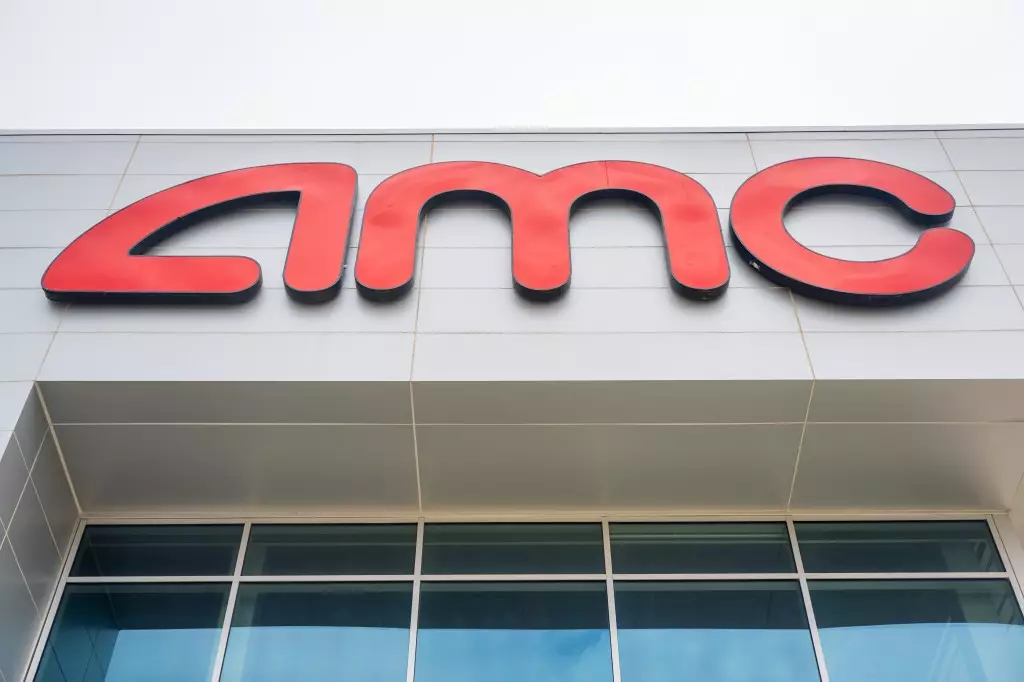The landscape of the movie industry often mirrors the complexities of its audience; one moment, it enjoys a fervent renaissance, and the next, it may plummet into an unexpected downturn. AMC Entertainment recently revealed a decline in revenue and a formidable widening of net losses, reporting a staggering $202 million in losses for the first quarter of 2025—up from $163 million in the previous year. The figures can paint a grim picture, yet AMC’s CEO, Adam Aron, passionately contends that these losses are part of an anomaly rather than a clear picture of the industry’s future. His assertion raises important questions about the validity of assessing the long-term health of movie theatres based solely on a three-month span.
Critics might argue that such statements are merely optimistic spin in light of disappointing fiscal performance. Ironically, this resonates with an underlying reality that the cinematic universe was drastically affected by external pressures in the previous years, including health crises and streaming surges. Nevertheless, it is vital to recognize that the pulse of the theatre industry is not simply dictated by quarter-to-quarter financials but is often subject to larger cyclical patterns.
Diving Deeper: Understanding Consumer Sentiment
Aron emphasizes the month of April as a turning point; the domestic box office shot up, doubling the revenues of April 2024. This suggests a ravenous appetite for cinematic experiences among audiences, indicating that perhaps the love for the big screen remains intact despite the dismal first quarter. Enthusiasm for a strong slate of upcoming releases, from animated features like Disney’s “Lilo & Stitch” to more serious fare such as “Mission: Impossible – The Final Reckoning,” bolsters this optimism.
It is a curious intertwining of data and passion when industry leaders focus on consumer excitement. The nostalgia-laden offerings, alongside blockbuster spectacles, currently seem to create a perfect concoction to draw audiences back into theatres. Thus, one must ponder whether the rapture around high-profile films can offset the struggles of a beleaguered fiscal quarter.
Consumer sentiment appears to have shifted significantly, with some citing that watching movies is a communal experience that streaming simply cannot replicate. It is this perspective that underlines the importance of understanding the psychological dynamics influencing box office performance. Where seated audiences create a shared emotional response, digital streaming can sometimes feel isolating, irrespective of the beloved content available.
Innovations and Loyalty Programs: A Beacon of Hope
AMC has not sat idly amidst the tempest of fluctuating revenues. Rather, its focus on customer loyalty programs has yielded promising results, evidenced by the record-breaking admissions revenue per patron. The AMC Stubs loyalty program and A-List subscription service offer valuable incentives for patrons, transforming one-time moviegoers into repeat customers. Investing in such initiatives signifies a profound recognition of changing theatre experiences; consumers now seek more than mere ticket sales—they crave engagement and value for their entertainment dollar.
With productions poised for release from major studios, industry players need to ensure that enhancements extend beyond basic offerings. Premium formats, advanced booking systems, and unique in-theatre experiences might become the differentiators drawing audiences. This strategic nimbleness not only encourages repeat visits but also fosters a renewed enthusiasm for cinematic experiences.
In an era dominated by constant content churn on streaming platforms, the question of how to articulate the unique value of cinema looms large. AMC seems open to answering this with innovation and proactive strategies, drawing from lessons learned during difficult times to emerge as a resilient leader.
Market Trends: Implications for the Future
While some may perceive AMC’s fluctuations through purely fiscal lenses, delving deeper uncovers a picture painted by consumer trends. The evident resurgence in box office numbers suggests that the allure of cinema is far from extinguished. Rather, it may be undergoing a transformation. From family-friendly escapades to action-packed blockbusters—movies now serve as both an escape and a shared culture, rooting communities in shared experiences, even in increasingly isolating digital times.
As AMC navigates its path forward, it is essential that it remains vigilant in observing audience preferences and industry movements. The success of the box office is more than a mere reflection of economic indicators; it encapsulates societal trends and emotional undercurrents felt by the public. The future of moviegoing rests not only on the films released but also on the conditions that shape our collective desire for a remarkable night at the movies.
